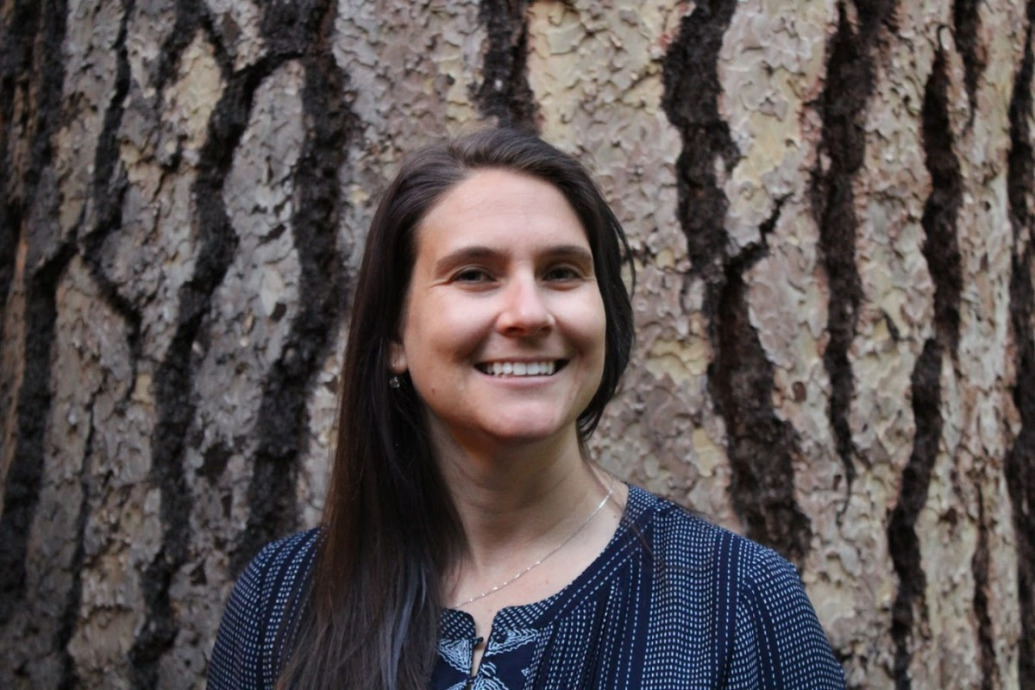We docked in Roseau, Dominica at 8AM, did rooms service breakfast, and were in the Silhouette Theater at 915AM to catch our 930AM tour. Debarking the ship, we were vectored to the end of the pier and on to the welcome area where a nice steel drum band was performing. We were divided into smaller groups, and were paired with a tour guide named Kamini, who we believe was part Kalinago (the original tribe on the island prior to the colonists). Pretty soon we were on our way around Dominica (pronounced DOM-in-eek-a).
This was a bit of an adventure tour, with two main stops – first up was Titou Gorge, an icy waterfall flowing through a gorge that you must swim up to in order to witness; the second stop was a natural hot spring. The stops were just OK, but we really enjoyed driving around Dominica because of the natural beauty and emphasis on ecotourism. The infrastructure was still rough (bad roads, accommodations not yet catering to more upscale needs of hipsters etc.) however the natural beauty and the government investment in natural parks and trail systems in second to none in the Caribbean, making Dominica an island on the rise with development and investment expected to pour in. Thinking back to our Nicaragua/Costa Rica trip, we considered Dominica to fall in between those two countries with respect to being tourism and ecotourism friendly. Not quite as manicured and turn-key as Costa Rica (but with the same potential), but much more accommodating, with more natural beauty and intentional government investment than Nicaragua.
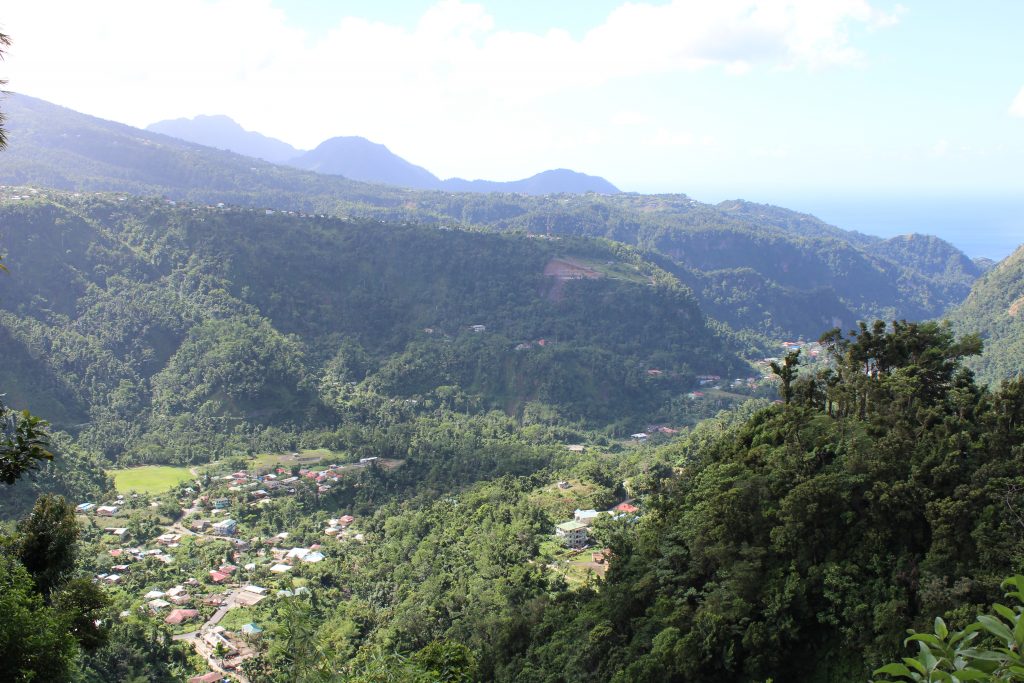
Dominica countryside
Our guide Kamini lived on the northeast side of the island, opposite from Roseau, the capital, in the southwest. She shared with us a history of the island, including the tribal history and clashes with colonial powers. Dominica was originally named “Waitukubuli” meaning “tall is her body” (after the mountain shape of the island), and then renamed upon “discovery” by Christopher Columbus after the day of the week in which he first saw it (Domenica means Sunday in Italian) in 1493. Boring.
In the 16th/17th/18th century the island was a Kalinago stronghold and played a central role in rebuffing colonization due to its mountainous terrain and inaccessibility. As other islands with Kalinago presence began to fall to the English/French/Dutch/Spanish powers, the Kalinago from those islands migrated to Dominica to make a larger stand. The Spanish took no interest in Dominica because it lacked gold, and so basically the British and French vied for its control over 200 years (the Dutch were a minor power in that part of the Caribbean). Ultimately the British did colonize Dominica, but not until after a long period of conflict with the Kalinago occupying the interior. The Kalinago would conduct raids on the colonial settlements, and would bring slaves to the interior, free them, and integrate them in to their civilization. For this reason, Dominica was one of the last islands to fall to foreign powers. By the 19th century, the British had successfully established sugar plantations in the valleys and sloped areas of the mountains that were more accessible. Today, the Kalinago hold a swath of 8 miles in the interior of the island and self-govern, a status which was granted to them in 1903 by the British.
Kamini also taught us about some of the practices of the Kalinago, including how they would build canoes. They would start with mahogany trees that would be felled, carved and hollowed out to form the dugout of the canoe. They would then fill it with water and rocks and light a low fire below the canoe, which would be elevated on a spit. The smoke and hear from the low flames would harden and stretch the wood to make the inside cavity much bigger than the original size. Interesting technique that they still use today.
This narrative more or less kept us occupied on the drive to Titou Gorge. Along the walk, we saw some really nice foliage!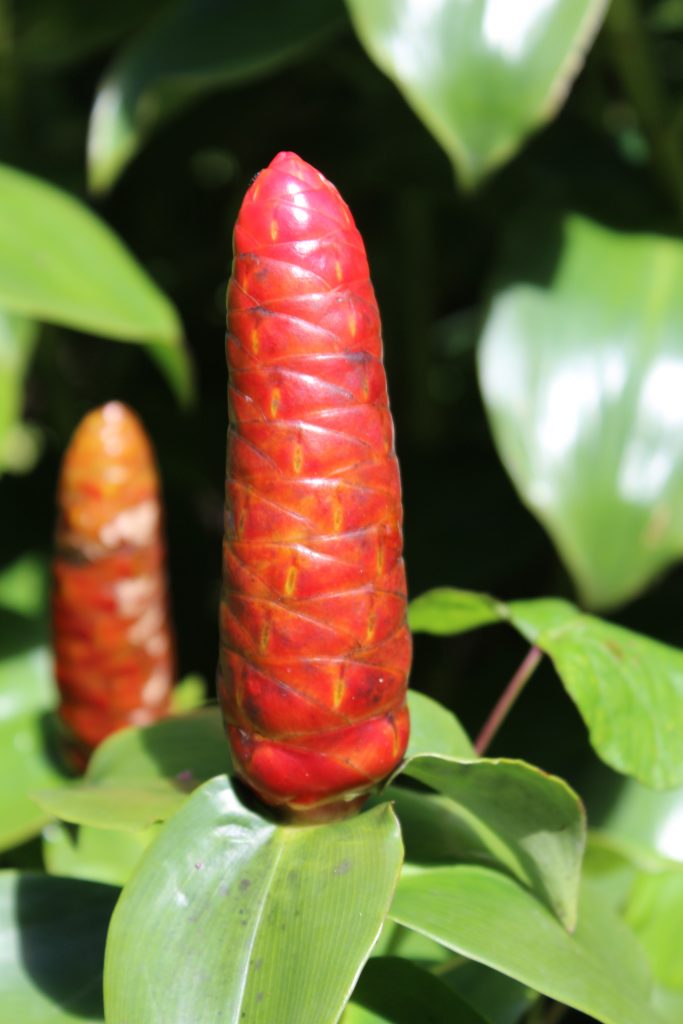
Once at the gorge, we got fitted with life jackets and proceed to jump in to the icy water.
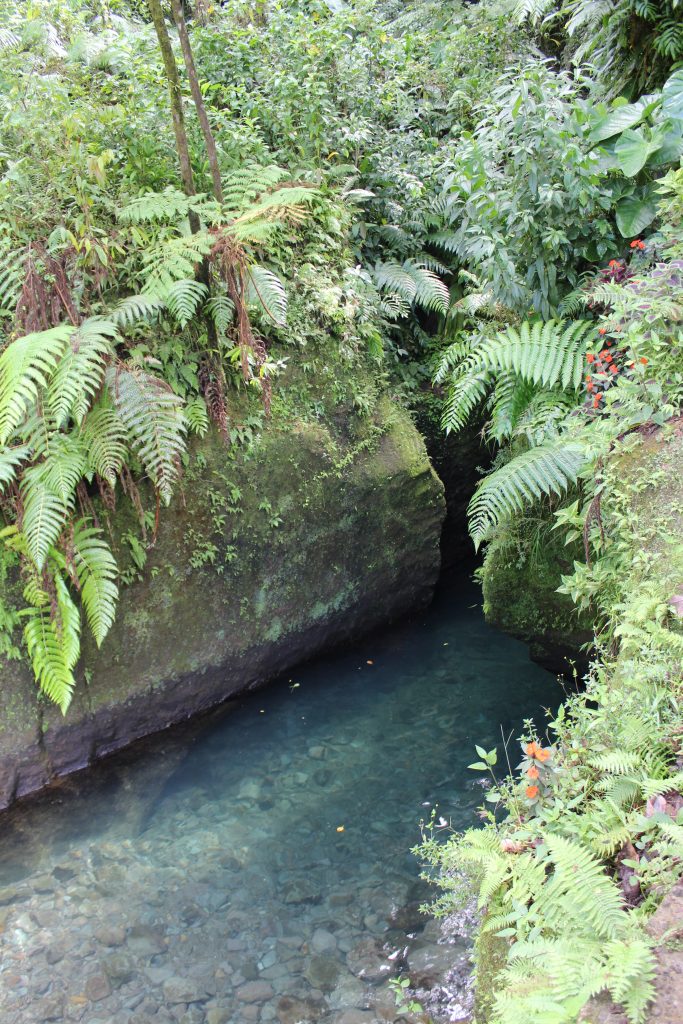
Titou Gorge in Dominica
Komini and our driving Armstrong called it “refreshing”. Brendan and I were the first two in of about 4 ten person tour groups. It definitely started to get crowded on the swim back and it was hard to avoid getting kicked by less capable swimmers.
Once in, we swam through a few small cave systems where scenes from Pirates of the Caribbean Dead Man’s Chest was filled – this brought $90M in to Dominica’s economy. We swam against the current but it was not that strong, and since we were first it was quite easy to make it to the waterfall at the gorge’s mouth. Once at the waterfall, Brendan climbed up on to the platform, while I struggled to find solid footing to counteract the strong rush of water down. Seeing the waterfall was enough for me, so I dove out of there once getting half-way up, allowing for others to try. Brendan was able to take some pictures with his Go Pro.
Getting out was actually more challenging than getting in because of the number of people that had clogged the path – many of which were being assisted (actually, dragged) by guides since their swimming/physical capability level was not up to snuff. We didn’t understand why these people were allowed in at all. If you couldn’t handle the current yourself, you should have had no place being there.
After drying off a little, we continued to our second stop which was a meager natural hot spring operated by an elderly British lady. It was underwhelming. We did get to experience about 6 different pools of mineral water at different temperatures over the course of an hour. We would have skipped this part of the tour if we had a choice. We also learned during this part of the visit that one of the recent hurricane Erika (in 2015) had devastated the island, which is why the roads were still so bad (and/or main roads completely inoperable) on our journey through to the hot springs. Dominica officials started to plant bamboo in order to prevent soil erosion as a result. We noticed bamboo on several of the islands we visited on this trip, in fact. If there could be an upside to the hurricane in any way, it would be that it exposed some terrain that has previously been hidden, such as waterfalls. We witnessed one of these.
After three hours, we were back in Roseau after a nice overview of the beauty of Dominica. We also got to experience the friendliness and hospitality of the Dominican people, finding this island nearly as laid back as Barbados. Walking through some of the craft market in town, we were surprised how little anybody tried to sell to us.
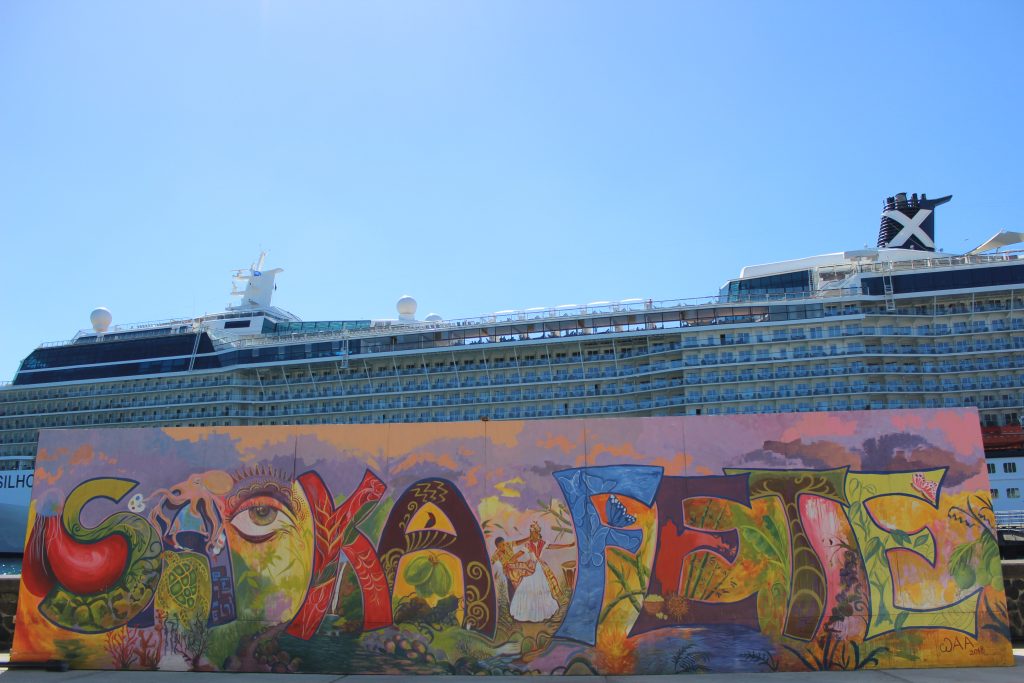
Dominica
Feeling thirsty, and not yet wanting to board the ship, we spotted a little hole in the wall tiki bar in a second floor commercial area on the main street, overlooking the water. 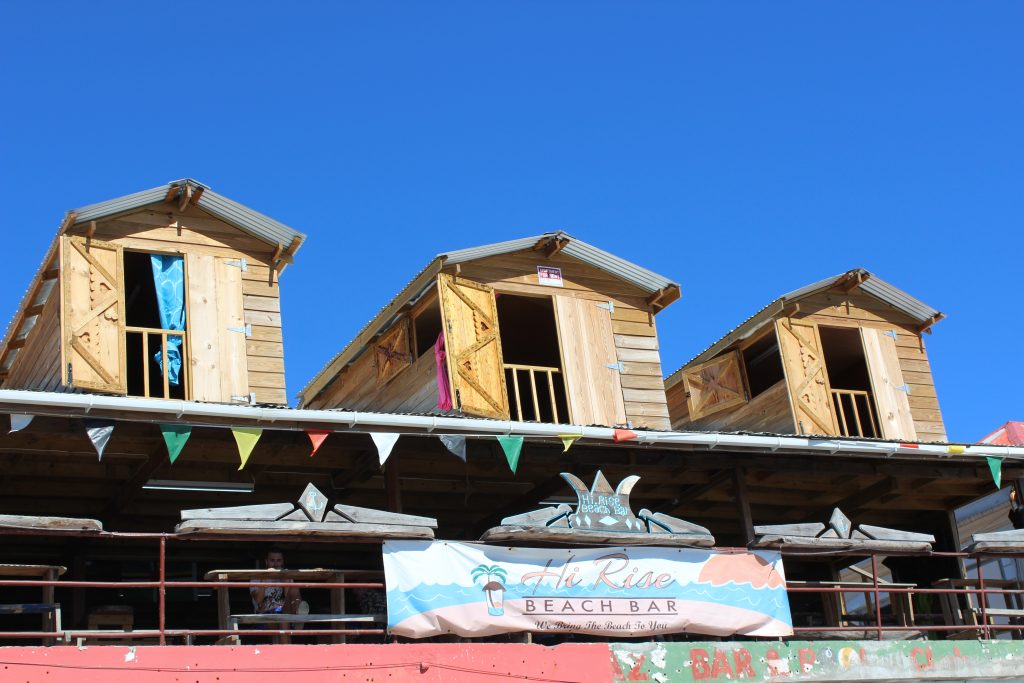 We hung out there for about an hour, trying the local beer Kubuli (slogan: “The beer we drink” – very much on the nose!) as well as some strong rum punch (spiked with nutmeg no doubt) and a soursop smoothie (delicious).
We hung out there for about an hour, trying the local beer Kubuli (slogan: “The beer we drink” – very much on the nose!) as well as some strong rum punch (spiked with nutmeg no doubt) and a soursop smoothie (delicious). 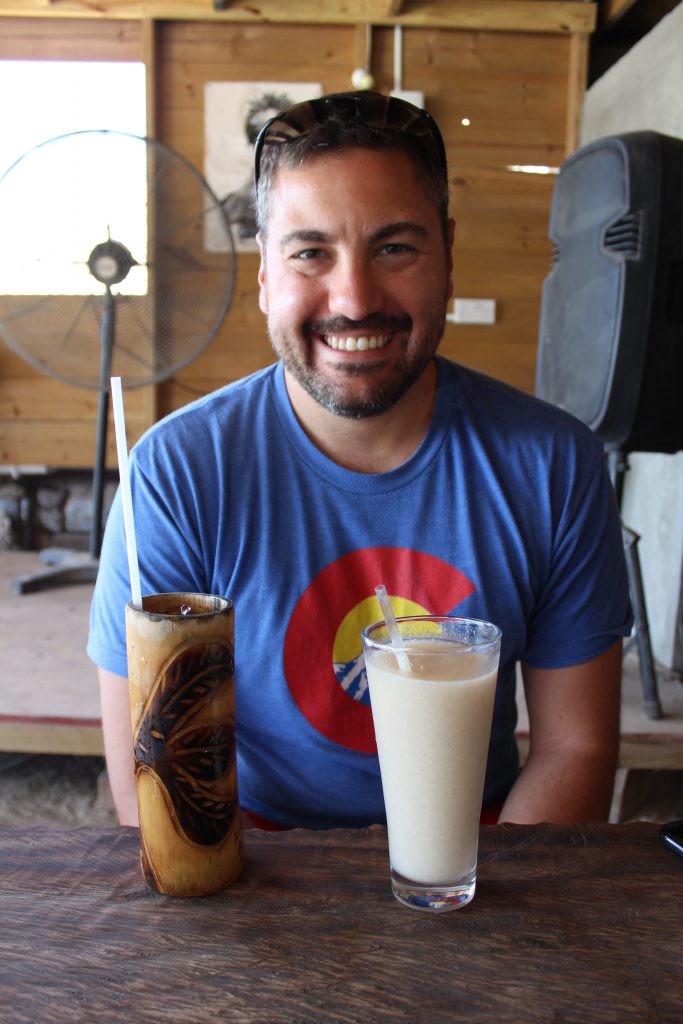
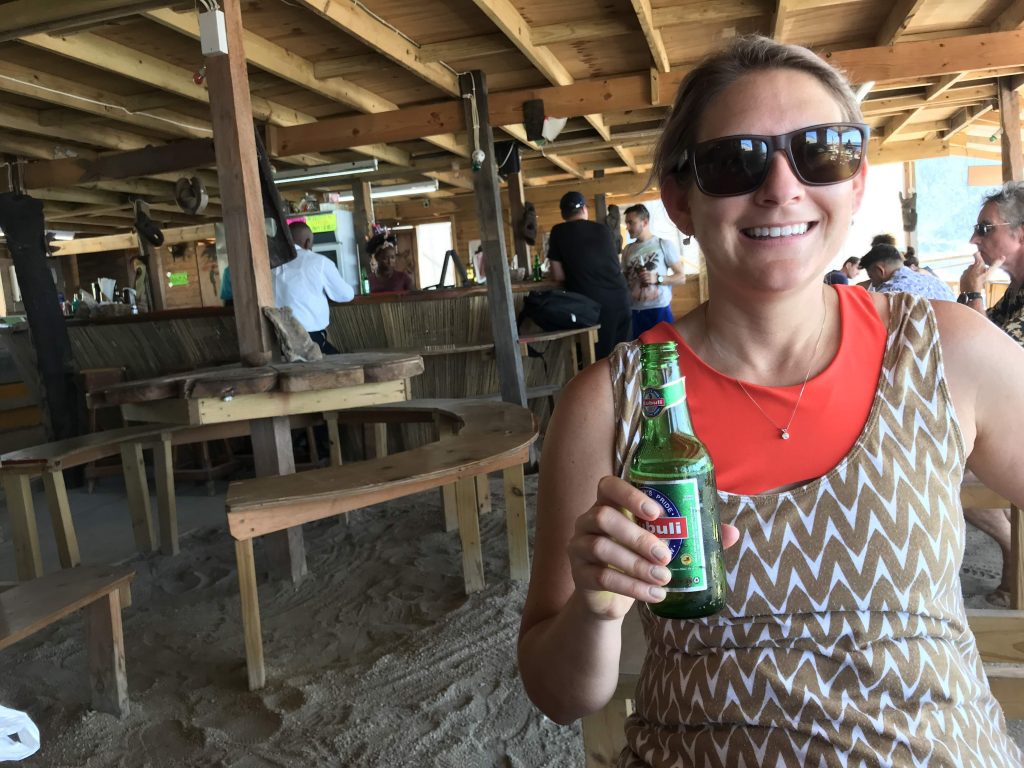
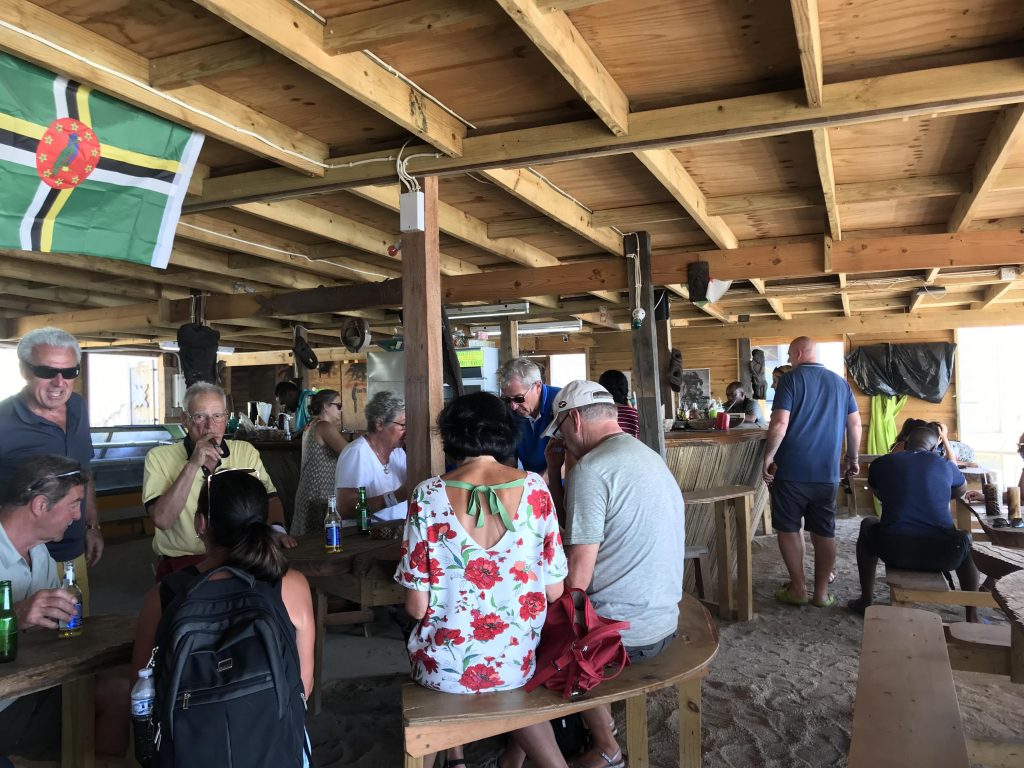 We noticed several of the crew members from our ship at the bar as well – it apparently was a port favorite. For future reference, the name was “Hi Rise Beach Bar” and it also had a slogan (apparently everything in Dominica has to have a slogan) – “we bring the beach to you.” Apt, since the floor was covered with sand.
We noticed several of the crew members from our ship at the bar as well – it apparently was a port favorite. For future reference, the name was “Hi Rise Beach Bar” and it also had a slogan (apparently everything in Dominica has to have a slogan) – “we bring the beach to you.” Apt, since the floor was covered with sand.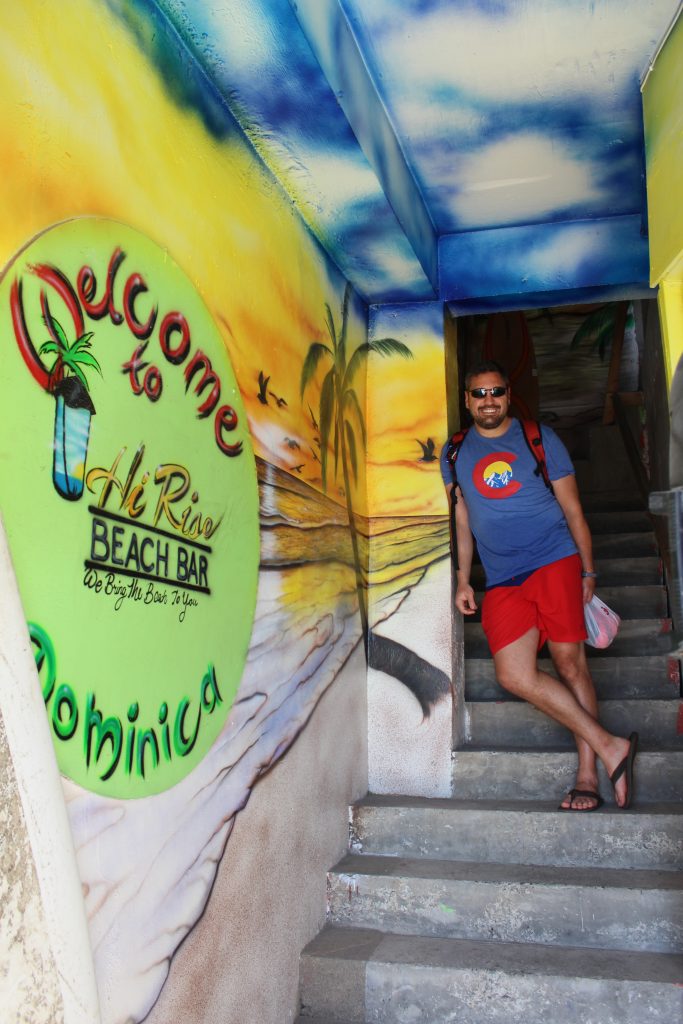
Back on the ship, we went to the buffet for dinner, which was a disappointing Italian night (nothing vegetarian and chicken parmigiana didn’t even have sauce!). We walked around the decks afterwards and took some pictures as well of the surroundings.
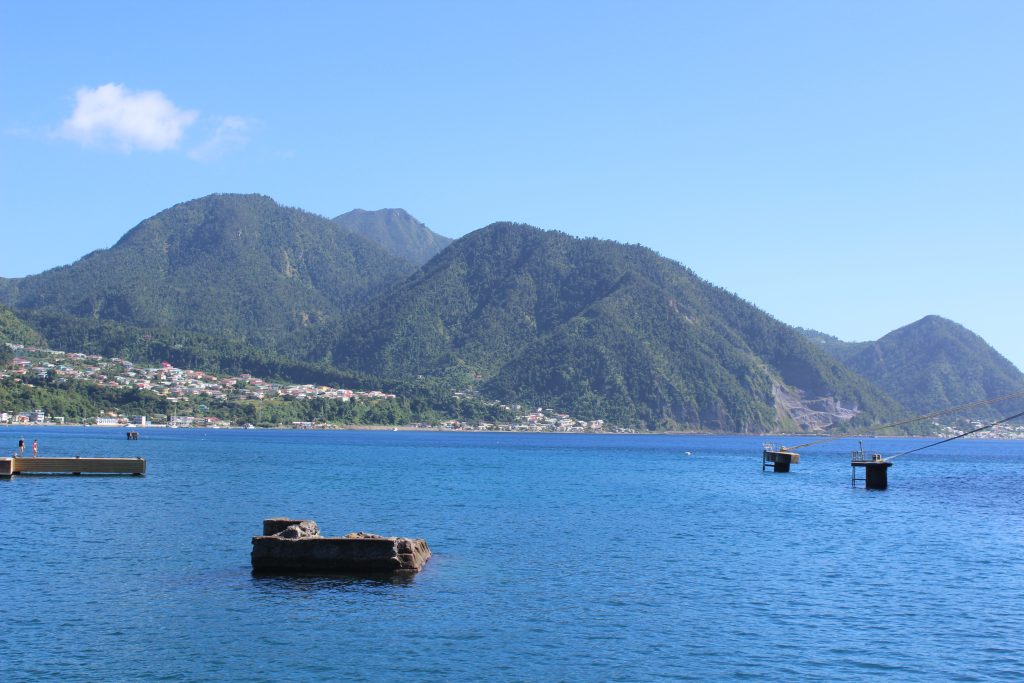
We went to the early show afterwards, and it was a juggler/entertainer named Pete Matthews. It was the best show of the cruise. He was so funny, and had so much energy, that I felt exhausted afterwards. He was completely soaked in sweat – he juggled literally everything, told jokes that were laced the British dry wit (my favorite time), and had some really funny audience participation elements. We were glad we went.
We continued with our normal evening routine of dessert, some HGTV in our room, reading, and a nice long sleep. Despite us being evening people, we were usually quite tuckered out by the day’s activities, that we had no problem with earlier than usual bedtimes. Oddly enough, we also had no problem registering more than 10,000 steps a day despite being locked mostly on a cruise ship or in a tour van.
